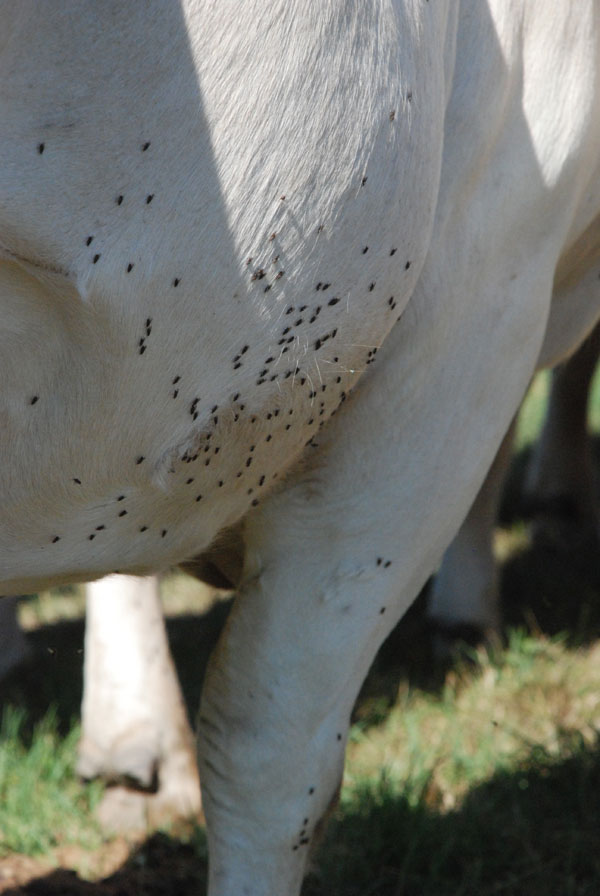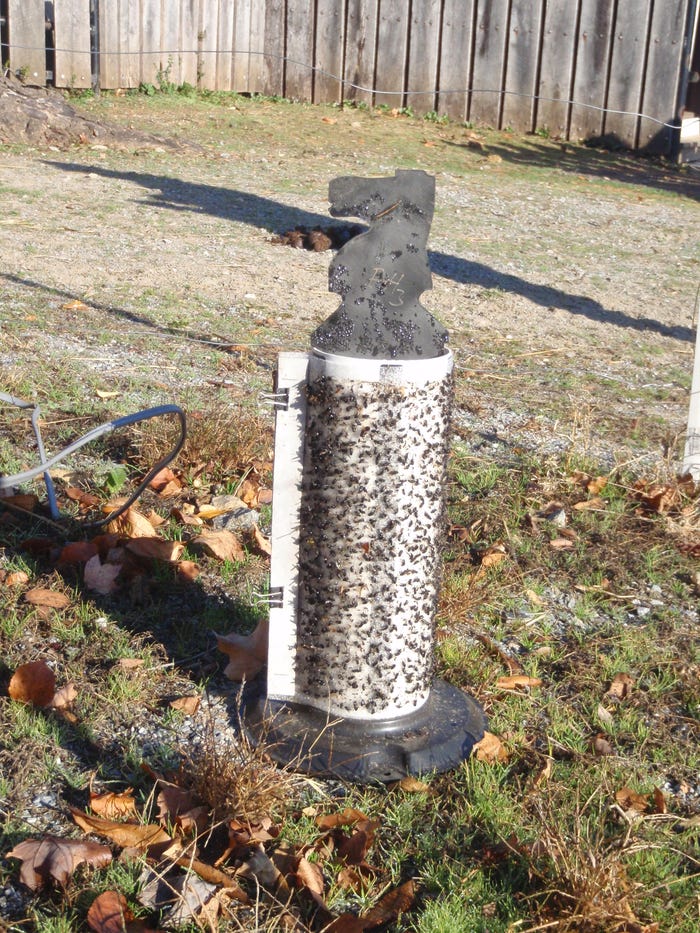They bite. Hard. But researchers say controlling stable flies is possible and profitable.
April 19, 2018

By Sandra Avant
Stable flies can travel for miles and are tough to control in rural areas. Females lay eggs in wet, organic materials such as hay, manure, compost heaps and grass clippings. Both males and females feed on blood-delivering painful bites to livestock and people.
For livestock producers, these attacks can be costly. A 2012 ARS economic impact assessment found that stable flies cost the U.S. cattle industry more than $2.4 billion each year-reducing milk production in dairy cows, decreasing weight gain in beef cattle and lowering feed efficiency.
Insecticide treatments are used to help keep stable flies off animals, but treatments wash off as cattle walk through wet grass or wade through water. Traps, on the other hand, can augment or replace insecticides, surveying and helping reduce stable fly populations, which benefit animal health and welfare.

Knight Stick
A new stable fly trap, now on the market, catches more flies than the standard trap, according to a recent Agricultural Research Service (ARS) study.
The Knight Stick trap is highly attractive to stable flies, fits in tight places and is very portable, said entomologist Jerry Hogsette, with the Mosquito and Fly Research Unit at the ARS Center for Medical, Agricultural and Veterinary Entomology in Gainesville, Florida. Experiments showed that the Knight Stick was a major improvement over the standard Olson Sticky Fly trap when it came to trapping stable flies. This trap is intended for outdoor use.
In the study, published in the Journal of Economic Entomology, Knight Stick traps with sticky wraps were placed at several horse facilities and at an exotic animal rescue facility for 24 or 48 hours, depending on the existing stable fly population levels. The Knight Stick captured three times more flies than the Olson trap. A second study, published in Zoo Biology, found that traps placed inside zoological park exhibits captured five times more stable flies than traps along exhibit perimeters. Knight Stick traps have also been evaluated around beef and dairy cattle and other domestic animals with similar results.
Although Knight Stick traps cost slightly more, customers like the dramatic increase in the numbers of flies captured, the ease of servicing the trap, its small size and in particular its portability, according to Hogsette. The trap itself also is a one-time purchase: only the sticky wraps need to be repurchased as needed.
Avant is communications specialist for USDA’s Agricultural Research Service.
You May Also Like



